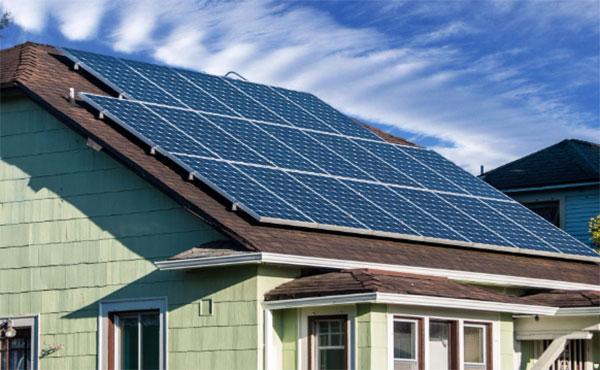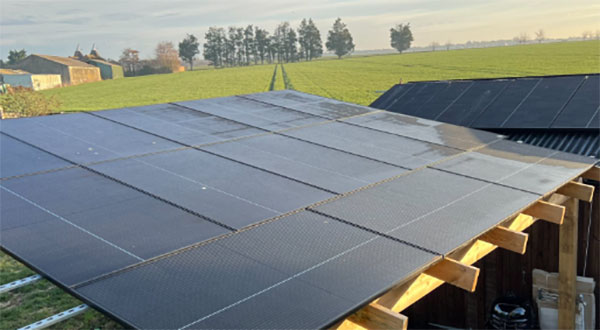Description
Solar panels can be moved to another house, but it involves significant costs, risks, and potential efficiency impacts.

Feasibility of Relocating Solar Panels
Structural Considerations and Panel Durability
Moving solar panels from one house to another requires meticulous consideration of structural factors and the inherent durability of the panels.
- Material Quality and Durability: Solar panels are generally made with robust materials like tempered glass and reinforced frames, typically ensuring a lifespan of 25-30 years. However, the integrity of these materials can be compromised if not handled correctly during the move.
- Size and Weight Specifications: Panels vary in size, but a standard panel might measure approximately 65 inches by 39 inches and weigh around 40 pounds. The size and weight of the panels dictate the complexity of the moving process, impacting the logistics and costs involved.
- Risk of Damage: The risk of cracking or damaging the cells is significantly high during transportation. Even a small crack can lead to efficiency loss, with the panel's output potentially dropping by more than 20%.
Impact on Warranty and Insurance
The decision to relocate solar panels also heavily hinges on the implications it has on the warranty and insurance coverage.
- Warranty Terms: It's crucial to review the warranty documents in detail.
- Insurance Coverage: Homeowners should consult with their insurance provider to understand how the relocation of solar panels affects their policy. The process might increase the insurance premium due to the perceived risk during transportation and reinstallation.
- Potential Costs: The costs associated with moving solar panels can be substantial. Professional removal and reinstallation can range from $1,500 to $6,000, depending on the system size, complexity, and distance of the move. This does not account for potential increases in insurance premiums or the risk of losing warranty coverage.

Process of Moving Solar Panels
Steps for Safely Dismantling Panels
Dismantling solar panels is a delicate process that requires precision and an understanding of the system's intricacies. The goal is to minimize potential damage and preserve the integrity and efficiency of the panels.
Initial Assessment and Documentation: Before any work begins, it's crucial to document the current state of the solar panels and system. Take photographs and note any pre-existing damage or peculiarities.
Shutting Down the System: Safety first—ensure that the solar power system is completely shut down. This involves switching off the AC/DC isolator and disconnecting the system from the grid. This step is vital to prevent electric shocks and system damage.
Panel Removal: Carefully remove the panels from their mounting. This step often requires specialized tools and techniques, especially if the system uses a tracking mechanism to follow the sun.
Securing Connections and Wires: After the panels are removed, secure all connections and wires. Label them meticulously to ensure a smooth reinstallation process at the new location.
Packing and Transportation Guidelines
Packing Materials: Use high-quality packing materials to protect the panels during transportation. This includes using padded covers or blankets and sturdy boxes that can withstand the weight and prevent movement during transit. Ensure the packing materials are clean to avoid scratching the panels.
Transportation Mode: The mode of transportation should be selected based on the distance and the number and size of the panels. For shorter distances, a padded van or truck might suffice. For longer distances, however, professional logistics services that specialize in fragile items might be necessary.
Cost Implications: The cost of safely dismantling, packing, and transporting solar panels can vary widely, typically ranging from
$500 to $2,500, depending on the system size, distance of the move, and specific handling requirements.

Installation Challenges at the New Location
Assessing Roof Suitability and Orientation
Proper installation of solar panels at the new location involves a thorough assessment of the roof's suitability and the panels' orientation, factors that are critical in maximizing the system's efficiency and lifespan.
- Roof Condition and Material: Evaluate the condition of the roof at the new location. It should be structurally sound to bear the weight of the panels. The material of the roof also matters; metal and composite roofs are typically more conducive to solar panel installation compared to wood or slate roofs.
- Orientation and Tilt: The orientation of the panels is pivotal in harnessing the maximum solar power. Ideally, panels should face south in the northern hemisphere. Additionally, the tilt should match the latitude of the location to optimize the angle of sunlight hitting the panels.
- Shading Analysis: Perform a shading analysis to ensure that no nearby structures or trees cast shadows on the panels during peak sunlight hours. Even partial shading can significantly reduce the efficiency of the entire system.
- Local Regulations and Permissions: Be aware of local building codes and homeowners' association regulations.
Electrical System Integration and Upgrades
Integrating the solar panel system with the electrical setup of the new house often presents several challenges, requiring careful planning and potential upgrades.
- Compatibility Check: Ensure that the existing electrical system of the house is compatible with the solar panel system. This involves checking the amperage, wiring, and the age of the electrical system.
- Upgrading Electrical Components: In some cases, parts of the electrical system may need to be upgraded to handle the solar output safely. This might include adding a new subpanel, upgrading the main panel, or changing out older wiring.
- Grid Connection: If the system is to be connected to the grid, coordinate with the local utility company. This might involve additional inspections, fees, and the installation of a net metering system to monitor the energy produced and consumed.
- Cost Considerations: The costs associated with assessing the roof, making structural modifications, upgrading the electrical system, and ensuring proper integration can range significantly. It's crucial to factor in these costs, which can range from $1,000 to over $5,000, depending on the complexity and specific requirements of the installation.

Cost Analysis
Breakdown of Removal and Reinstallation Costs
The financial aspect of relocating solar panels involves a detailed breakdown of the costs associated with removal from the old location and reinstallation at the new site.
- Dismantling and Packing: The cost of professionally dismantling and safely packing solar panels can range from $500 to $1,500. This cost varies based on the number of panels, their accessibility, and the care needed to prevent damage.
- Transportation: Transporting the panels to a new location depends on distance and the size of the system. Costs can range from $200 to $800 for local moves, and significantly more for longer distances.
- Reinstallation Expenses:
- Roof Preparation and Structural Adjustments: If the new roof requires reinforcement or structural adjustments, costs can range from $1,000 to $3,000.
- Electrical Upgrades: Integrating the solar system with the new home's electrical system might necessitate upgrades, adding $500 to $2,000 to the total cost.
- Labor for Reinstallation: The labor cost for reinstallation typically ranges from $1,000 to $2,500, depending on the complexity of the system and the conditions at the new site.
- Permits and Inspections: Obtaining the necessary permits and passing inspections can add $100 to $500 to the total cost, varying by location.
Comparing Costs vs. Buying New Panels
When considering the relocation of solar panels, it's crucial to compare the total cost of moving and reinstalling the existing system against the cost of purchasing and installing new panels.
- Cost of New Panels: The price of new solar panels has decreased over the years. Currently, the average cost per watt ranges from $2.50 to $3.50, making the total cost for an average 5 kW system between $12,500 and $17,500 before any incentives or rebates.
- Efficiency and Technology: Newer models of solar panels offer better efficiency and more advanced technology. This can result in higher energy production and potentially greater savings in the long run.
- Warranty and Longevity: New panels come with full warranties, usually covering 25 years.
- Financial Incentives: Purchasing new solar panels might qualify homeowners for various federal, state, or local tax incentives, rebates, and credits, which can significantly offset the initial costs.

Potential Impact on Solar Panel Efficiency
Risk of Damage During Movement
Transporting solar panels from one location to another introduces risks that can potentially impact their efficiency and overall performance.
- Microcracks in Solar Cells: The process of dismantling, packing, and transporting can cause microcracks in the photovoltaic cells. These microcracks might not be visible but can significantly reduce the panel's efficiency.
- Damage to Wiring and Connections: The integrity of wiring and connections is vital for optimal performance. During movement, connections can become loose or damaged, leading to reduced efficiency or even safety hazards.
Performance Considerations in the New Environment
The new location's environment can have a substantial impact on the performance and efficiency of relocated solar panels.
- Sunlight Exposure: The amount and intensity of sunlight at the new location play a critical role. A decrease in sunlight due to geographic location, local climate, or shading from surrounding structures or foliage can reduce the panels' output.
- Roof Orientation and Tilt: Optimal installation requires that the panels be oriented and tilted for maximum sunlight exposure. In the new location, the roof might not offer the ideal conditions, potentially reducing the system's overall efficiency.
- Ambient Temperature: Solar panels operate most efficiently in specific temperature ranges. Higher temperatures can lead to a decrease in efficiency, known as the temperature coefficient. For example, a panel with a temperature coefficient of -0.5% per °C will see its efficiency decrease by 0.5% for every degree above 25°C (77°F).
- Local Regulations and Grid Compatibility: Adherence to local regulations and compatibility with the grid can also influence system performance.








